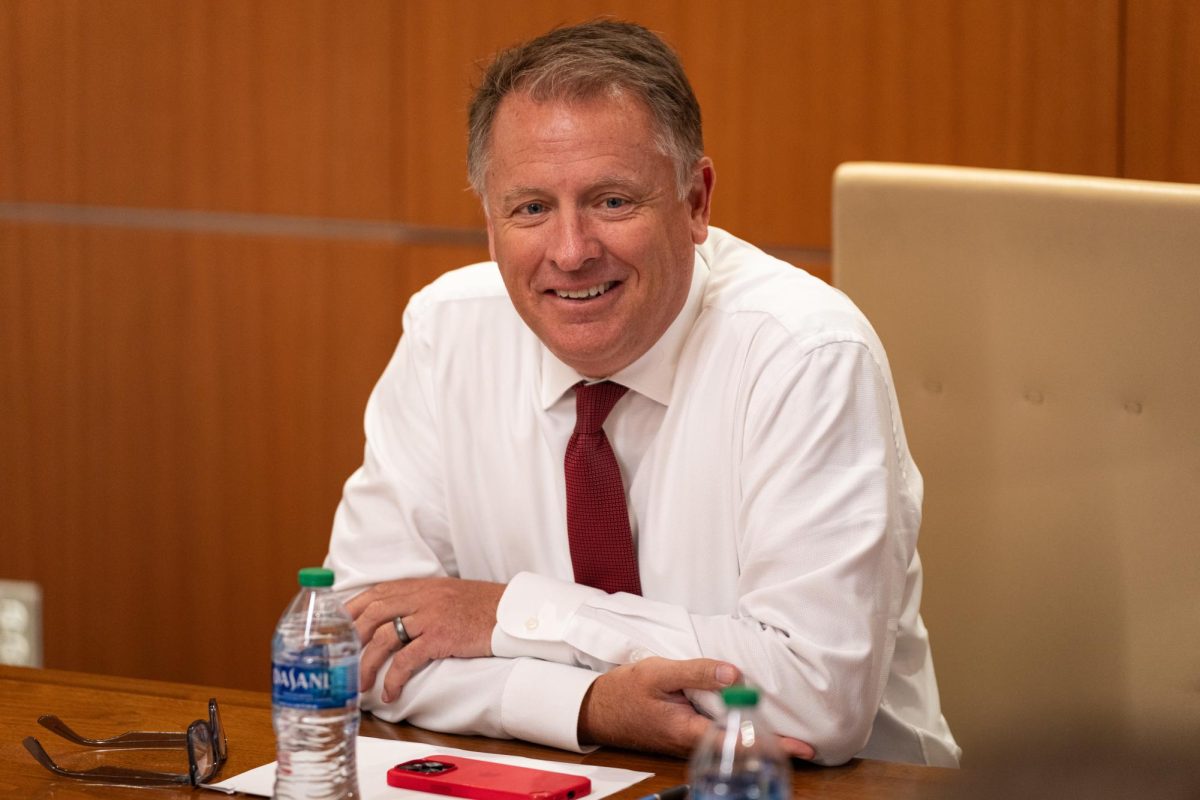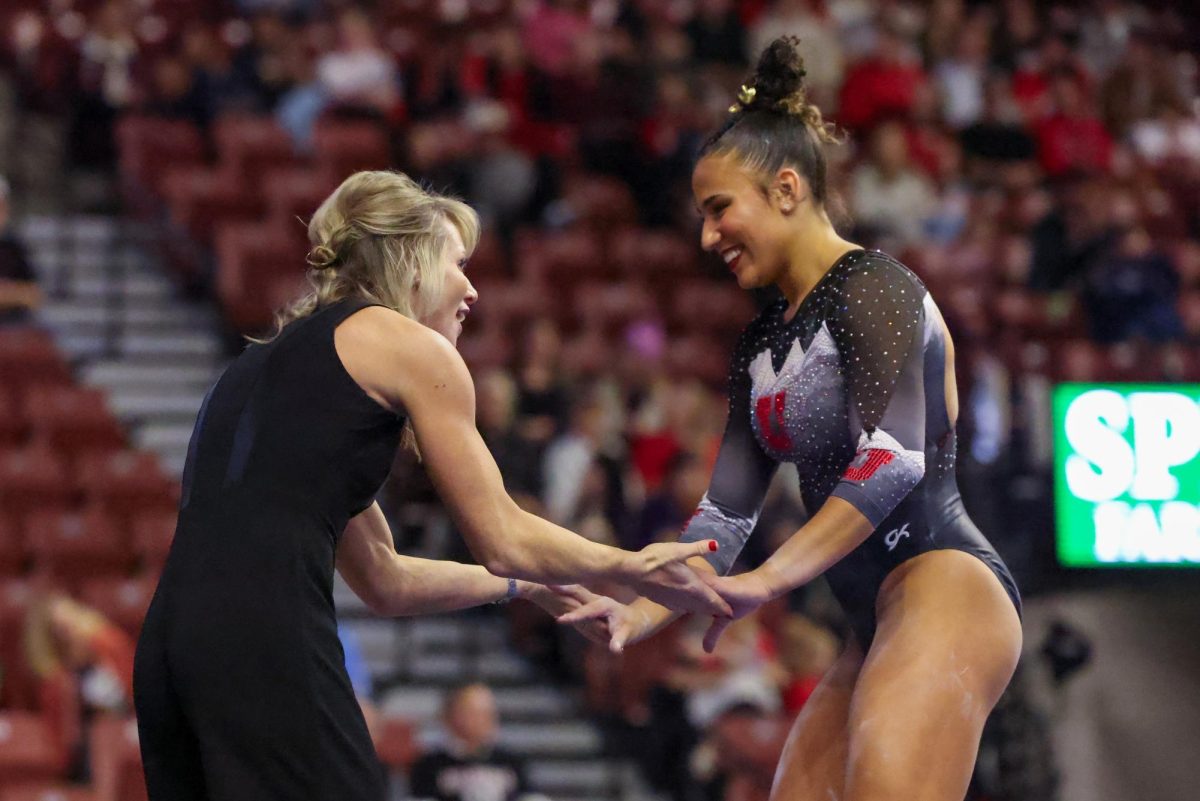The Queer Bait Debate: Can Straight Actors Play Queer Roles?

(Design by Claire Peterson | The Daily Utah Chronicle)
February 13, 2023
Trigger warning: This article will contain usage of the term “queer” in a non-pejorative sense.
“Back for a minute. I’m bi,” tweeted “Heartstopper” actor Kit Connor. “Congrats for forcing an 18-year-old to out himself. I think some of you missed the point of the show. Bye.”
The British actor recently faced online pressure from fans speculating over his sexuality and even going so far as accusing him of “queerbaiting” in real life for having been seen out in public with someone of the opposite sex.
As bizarre as that notion seems, it is unfortunately not new. Anytime an actor, regardless of if they openly identify as gay or straight, plays a gay character, the speculation around the actor’s sexuality always opens up.
This is yet another example of a long-lasting debate around whether or not only a queer character can be played by a queer actor. However, if that is the debate topic, the point has already been missed.
“I know that for folks, being accurately represented in media feels really, really important,” said Shelby Hearn, coordinator of Education & Leadership for the LGBT Resource Center at the University of Utah. “There’s a lot of passion around queer people telling the stories of queer people.”
Missed Messages
“Heartstopper,” the Netflix show created by Alice Oseman, who also wrote the graphic novel on which the show is based, tells the story of two high school students in Britain, Nick Nelson (Connor) and Charlie Spring (Joe Locke), meeting and gradually falling in love with each other. At the beginning of the story, Charlie is openly gay, but Nick is still figuring out his sexuality. As the season progresses, Nick comes to realize he is bisexual.
Hearn said they loved the range of experiences depicted in “Heartstopper,” especially for a story featuring high school-aged characters.
“I think [the characters] felt really real,” said Hearn. “Figuring out one’s own identity when you’re young, around gender and sexuality can be really tough.Especially when you’re surrounded by a lot of different, sometimes competing, influences of who you should be, or what one’s masculinity or femininity should look like, what our relationships with people should look like.”
For a small contingent of fans to completely miss the point of the story and pressure one of the main leads of the show into outing themselves before they were ready only makes it more frustrating.
“I truly don’t understand how people can watch Heartstopper and then gleefully spend their time speculating about sexualities and judging based on stereotypes,” tweeted Oseman in reply to Connor’s tweet. “I hope all those people are embarrassed as FUCK. Kit you are amazing.”
The speculation around Connor’s sexuality also reeks of biphobia. Specifically, the notion that a bisexual person is not “queer enough” if they are romantic with someone of the opposite sex.
The Business Side
From a broad angle, it is understandable why some queer audience members would have reservations over how a queer character is treated or portrayed on screen.
Queerbaiting is still a tactic used to reel in gay dollars, as is the mistreatment of gay characters to drum up shock value, commonly known as the “Bury Your Gays” trope. Despite more concentrated efforts to increase representation in front of and behind the screen, these problems persist.
The Motion Picture Production Code, also known as the Hays Code, was enforced from 1934-68. It dictated the moral dos and don’ts of filmmaking. Unsurprisingly, positive depictions of homosexuality were unacceptable. This led to many antagonists in movies during this time being heavily queer-coded and any perceived queer character being vilified. Even after the Hays Code ended, negative stereotypes of queer people still persist today.
“I think a lot of the frustration around queer representation comes from a long history from the ’90s of these award-winning films about queer stories, with characters being portrayed by straight actors and receiving all these accolades for that,” Hearn said. “This was still a period where artists who were gay had to keep that to themselves. Being openly gay could just really tank your career and really limit your opportunities — in really any area of work, but particularly in Hollywood.”
Why Care?
A healthy amount of skepticism is to be expected from audiences that have been spurned before. However, casting immediate doubt on all iterations of queerness in stories could do more harm than good. Increased representation for marginalized groups is one way to foster acceptance and normalization of queer identities despite the aforementioned issues.
“Heartstopper” is a rather simple story, but full of heart. It and others are being brought to life on screen more and more and they need support, not scrutiny. It’s one facet of an ongoing movement to create a more inclusive and equitable entertainment landscape for all audiences.







